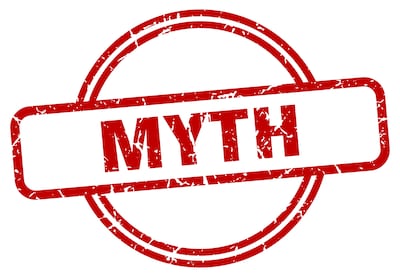
Physiotherapy helps people transform their lives, rehabilitate after injury or recover from mobility issues. It’s a proactive measure that improves a person’s quality of life and overall fitness and bodily support. It is not a one-dimensional measure of simply combatting pain and yet there are many myths and misconceptions surrounding physiotherapy which can restrict a person from paying their physiotherapist a much-needed visit.
Myths abound such as believing that physiotherapy is expensive, that a physiotherapist will stop you doing what you love, or even that a session is often seen as a hyped-up deep tissue massage. Some misconceptions adhere to an expectation that healing will take a long time or that physiotherapy is only for athletes. These ideas skew the understanding of what physiotherapy is and what it can do for individuals.
Chartered physiotherapist Avril Barrett of Motion Physiotherapy and Sports Injury Clinic in Kildare helps to clear up some of the most prevailing misconceptions about physiotherapy.
1) Myth - Physiotherapy is only for injuries and pain
One of the most believed ideas about physiotherapy is that it simply focuses on pain relief, but this is not the case. Physiotherapy is not only for those with substantial injuries or chronic pain and is not limited to treating muscle and ligament pain. The aim of physiotherapy is to increase the mobility of a person’s body and to improve their everyday functioning and quality of life.
READ MORE
“In general, you would think of physiotherapy for injuries, but we deal with all physical problems,” says Barrett. “You might develop pain that didn’t occur with an injury, and we can help resolve this pain. Also, we work with clients that have difficulties with movement and dysfunction, we work with them to restore full function. We also work with clients after surgery to restore full movement and strength. Physiotherapists work with all ages, from young to old, to relieve pain, restore movement, improve function and performance.”
In essence, physiotherapy is about keeping a person active, preventing injury and promoting good physical health. Physiotherapists help people with sports injuries, chronic pain, paralysis, pelvic floor issues and much more.
2) Myth - Physiotherapy is painful
“‘No pain no gain’ is commonly used for physiotherapy treatment,” says Barrett, “but we work with each client to make sure each treatment session is well-tolerated.”
Physiotherapy movements and exercises can certainly include a level of discomfort, but the aim of a physio session is to minimise the level of pain and discomfort experienced. A physiotherapist will not push a person outside of their pain boundaries and will work within their pain threshold to encourage and support a person in their healing.
“If you come to us with a painful condition, some of our treatments can be uncomfortable but they will work to overcome your presenting pain,” explains Barrett. “Overall, any treatments that are painful will not be used and we adapt any techniques that are too painful. We work with each client to have the best outcome. Physiotherapy treatment always includes an element of exercise, and we work with each client to create an exercise programme that is pain-free and restores movement and strength.”
3) Myth - Physiotherapy stops once you are discharged
Physiotherapy is often the beginning of a management plan that results in a person having the knowledge and know-how to support themselves and their bodies to meet their wellness goals. A person may be given exercises and regimes to help maintain those targets.
“Physiotherapy teaches clients how to look after their injuries and dysfunction, so self-maintenance will also be useful after you have come to the end of your physiotherapy treatment sessions,” advises Barrett. “This might be an ongoing exercise programme or self-release techniques shown to you by your physiotherapist. Many clients will need to work on their movement and strength for months after physiotherapy treatment sessions have concluded. Your physiotherapist will give you a programme to follow for the best recovery possible.”
[ Why you need to be doing a dynamic warm-upOpens in new window ]
Alongside this myth sits the idea that it will take forever to heal and once you start physiotherapy, you will be visiting your physiotherapist for a long time, but this negates the fact that physiotherapy aims for a full and complete cure and is not a temporary fix of a person’s issues. Results are often visible after a few sessions and a treatment plan is put in place dependent on a person’s ability, lifestyle and aims. This is, of course, unique to every individual and healing occurs on an personal basis with everyone’s recovery being different. The ultimate aim is getting a person’s body working to the best of its ability.
4) Myth - Physiotherapy is the same as massage
Perhaps one of the most misunderstood ideas surrounding physiotherapy is that it is on par with massage. Physiotherapy and massage are not the same thing and most certainly should not be bundled together. The difference between the two lies in understanding that a physiotherapist will commit to a physical examination and diagnosis of the problem using evidence-based practice and research to manage or cure pain and mobility issues using a variety of treatments.

“Physiotherapy uses all types of ‘hands on’ techniques, including massage on areas that we have found, through an assessment, will have beneficial effect,” says Barrett. “Massage techniques are never used in isolation for resolution of issues, but they often play a part in a treatment programme by your physiotherapist. ‘Hands on’ treatments like massage can be useful to reduce pain and restore movement. ‘Hands on’ or manual treatments include manipulation, traction, mobilisation of joints, trigger point therapy, acupressure, frictions and stretching. Exercise programmes are also used alongside these ‘hands on’ treatments to further aid recovery and build up strength in areas that are weak.”
[ Five foam-rolling exercises that may help relieve muscle tightness and painOpens in new window ]













